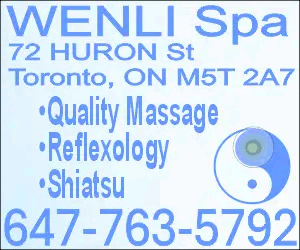
Most everyone has owned an massage tool at some point in their life. New gadgets flood to market each year promising to cure what pains you. There are massage guns, foam rollers, shiatsu heating cushions for your car, electric head massagers that when you wear them look like a plastic jellyfish is trying to eat your brain and so many others. They usually end up collecting dust in the back of a closet or get “donated” to a place like Goodwill.
One of the more popular items is the massage stick. You might even have one that you’ve forgotten all about it. There are thousands of different kinds of massage sticks, but they’re mostly plastic sticks with handles on either side and a rolling center composed of bump or grooves. The idea is that you can use the stick by pressing down and rolling over parts of your body for trigger point therapy, deep tissue massage, reduction of muscle soreness and promotion of blood flow.
Casey Smith is the owner and operator of the Sarasota Pain Treatment Center where he treats patients with neurosomatic therapy, a kind of specialized physical therapy that uses unique massage techniques to identify and correct structural and biomechanics imbalances in the body. He's recommended massage sticks to his clients for years. “A lot of my patients would come in with quad tension, knee pain, hip tension and that all leads to back pain, something everyone deals with this to some extent,” Smith says. He prefers the massage sticks to the popular percussion guns because while vibrating tissue can provide some relief, what your body really wants is static, consistent pressure.
After he massaged clients at his office, Smith would tell them to get a massage stick to continue working on their pain issues at home. “My clients would come back after using the massage stick and go, ‘Hey, great news! Hip is feeling great, knee is feeling great, but now my shoulders are a wreck.’ Turns out they would hurt their shoulders generating this downward motion with the massage stick trying to get the pressure they need.”
To address this problem, Smith spent the past five years developing a massage tool that would provide the benefits of a massage stick without the drawbacks. What he came up with is called the HyperRoller.
“The concept isn’t groundbreaking,” Smith says. “It’s a glorified rolling pin.” But he experimented with the weight and diameter to find the ideal balance in order to get the most out of the tool.

Cheaper massage sticks are mostly made up of plastic. Smith made his out of steel; it weights 10 pounds. There are heavier massage sticks on the market, but Smith believes this to be the ideal weight. “There is a depth at which your nervous system goes, 'Alarm alarm alarm!' and begins to guard itself,” Smith says. “I found that 10 pounds works for both someone in their twilight years and for a body builder.”

Smith let me take home a HyperRoller to see for myself. I’ve got just about every massage tool under the sun, and I use most of them with varying degrees of success for pain relief. The HyperRoller is by far the heaviest of the tools in my massage toolbox. It’s almost the most expensive, coming in at $119.
When I massaged myself, I found it to be most useful on my quadriceps, forearms and trapezoids. I could get deep, satisfying strokes with ease. Working some other areas is difficult without needing to provide extra force. But if you can get a partner to use the tool on you, the HyperRoller is fantastic. After just a short while of working on problem areas, I felt the pain melt away. If you are the type of person who complains about your partner not being able to massage you hard enough, the HyperRoller is the perfect massage tool. I wouldn’t expect to find it in a Goodwill any time soon.









































































































